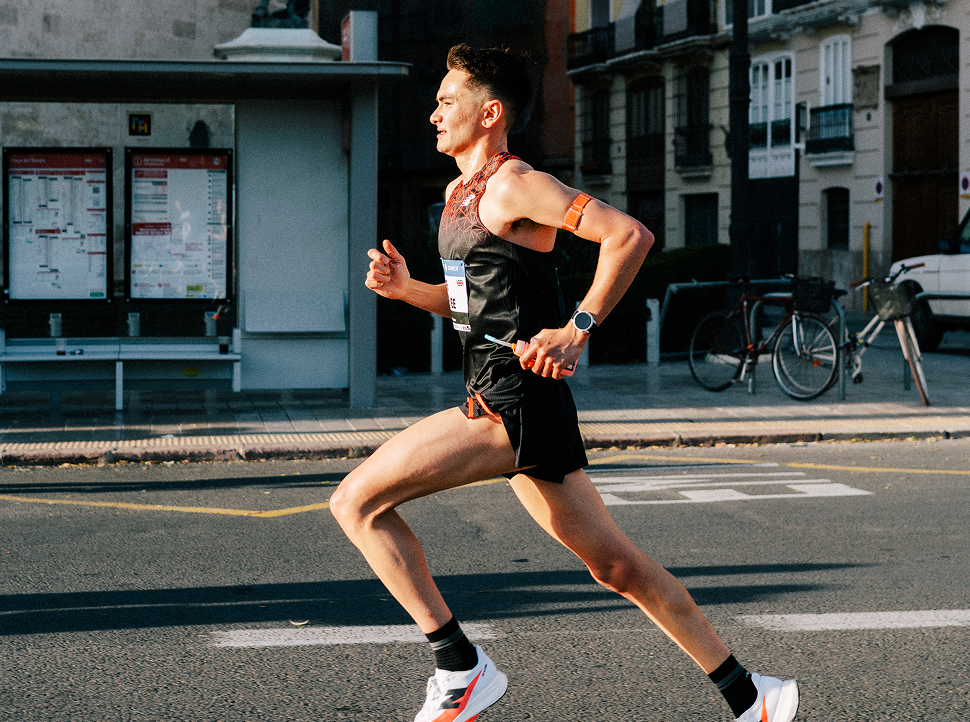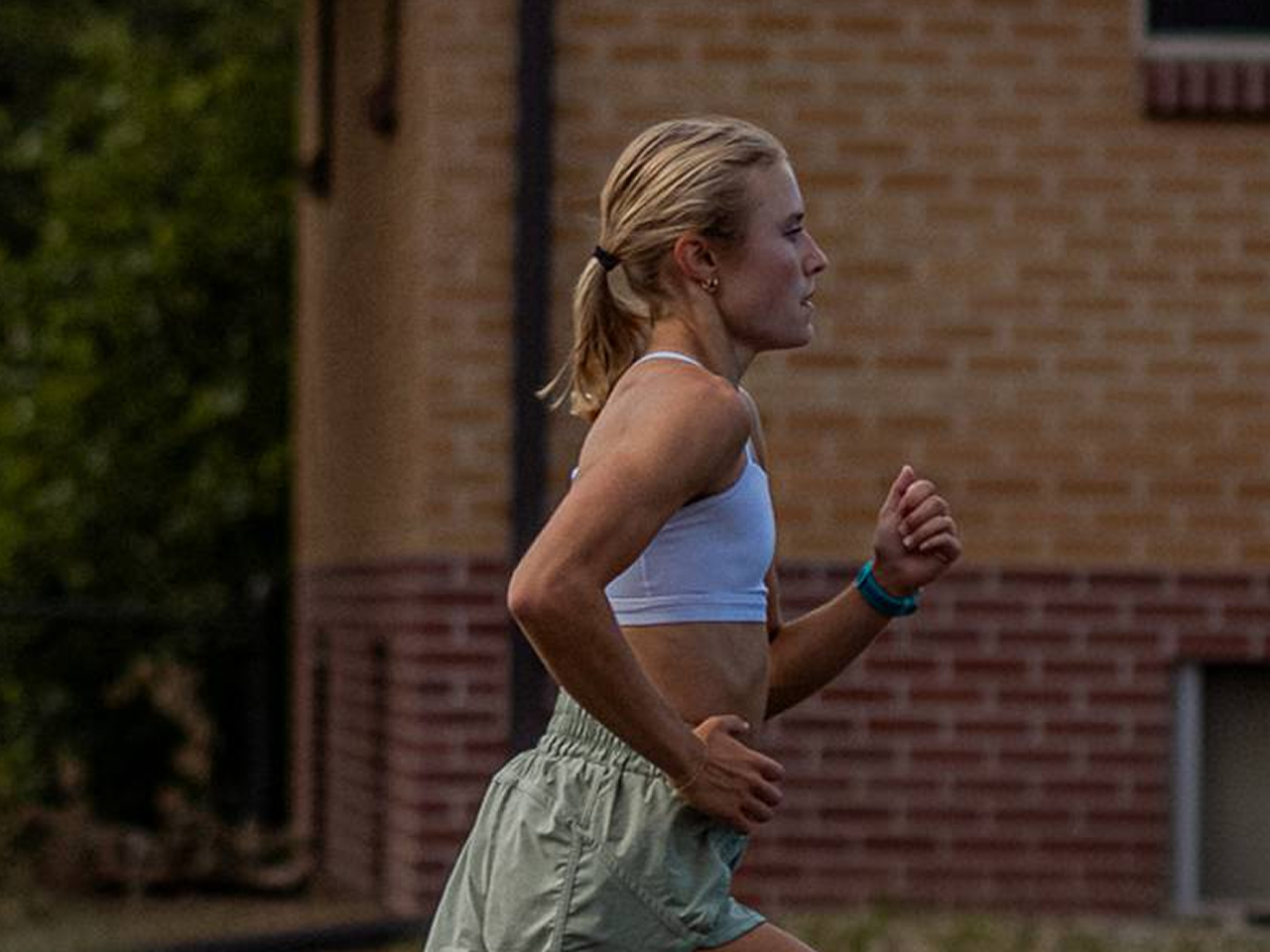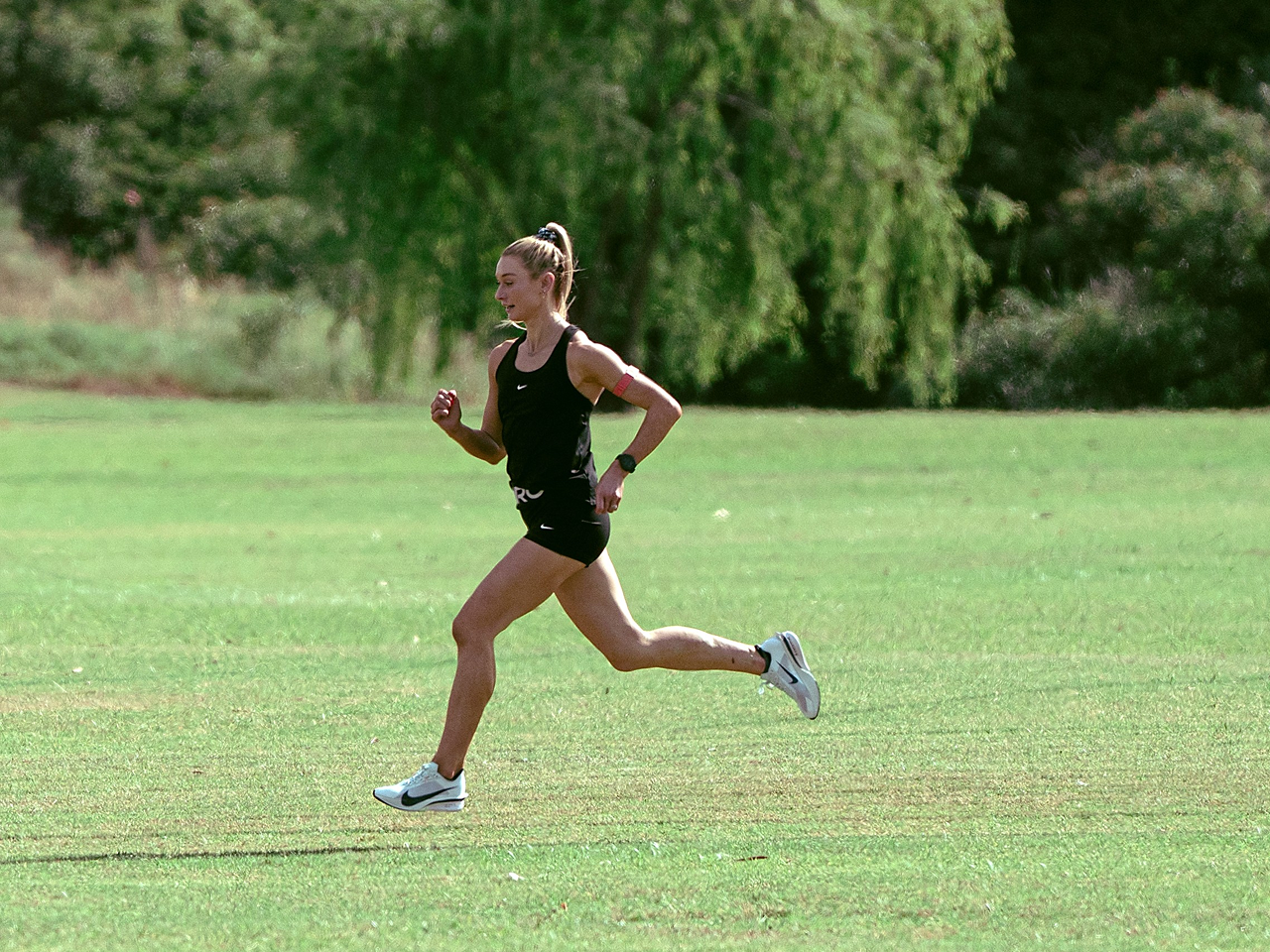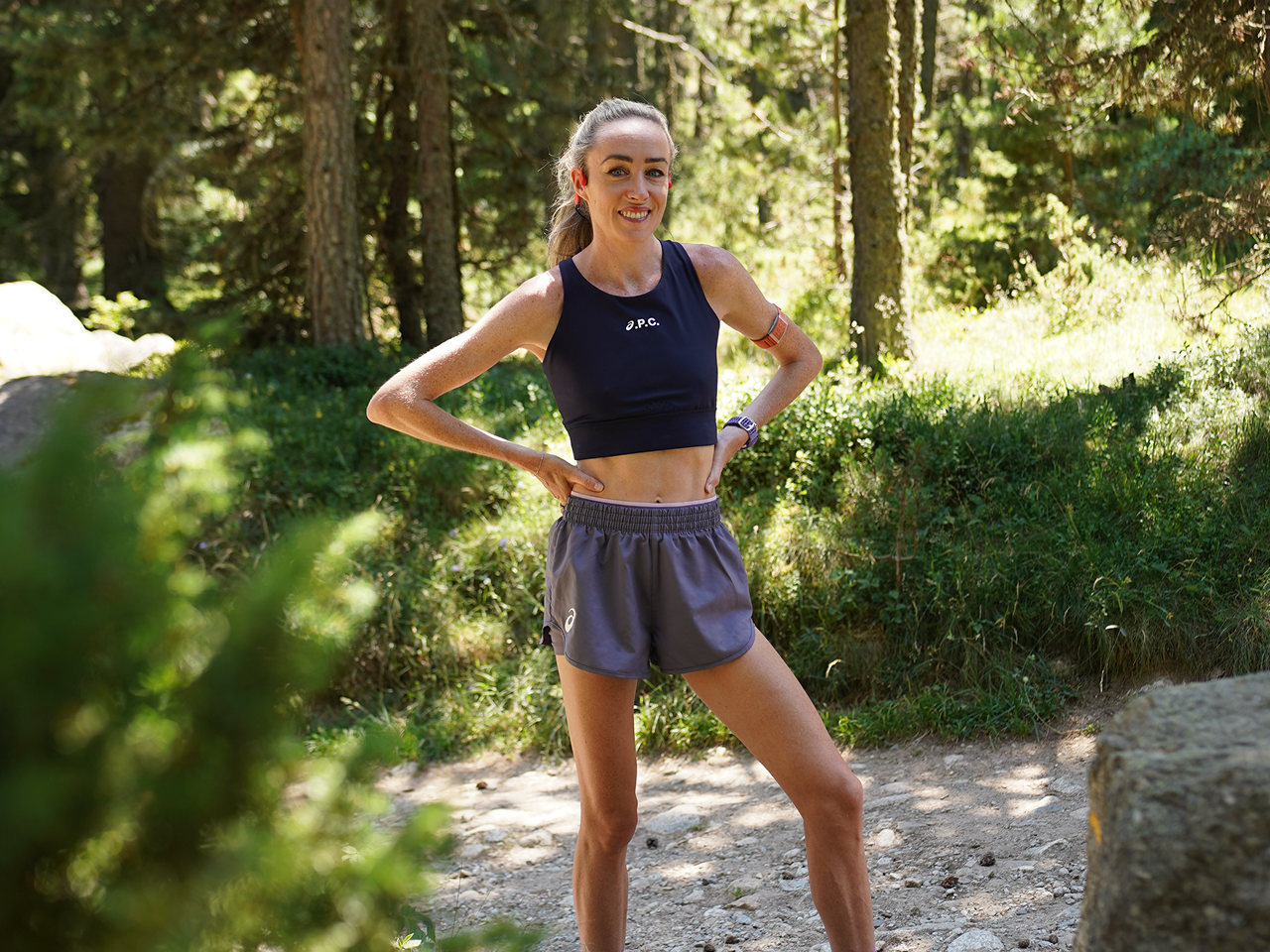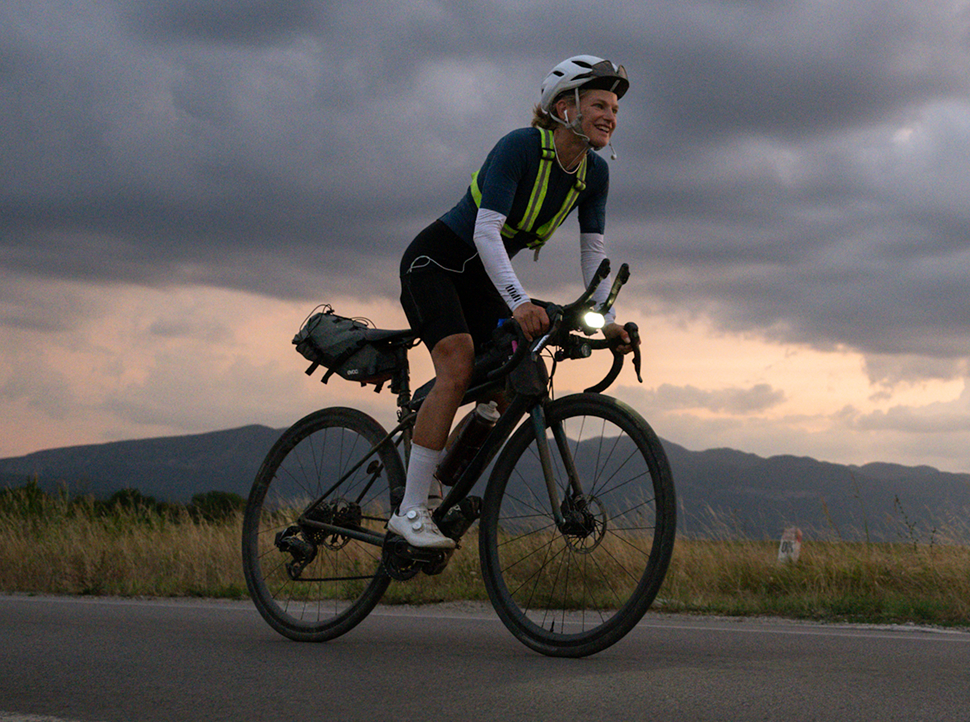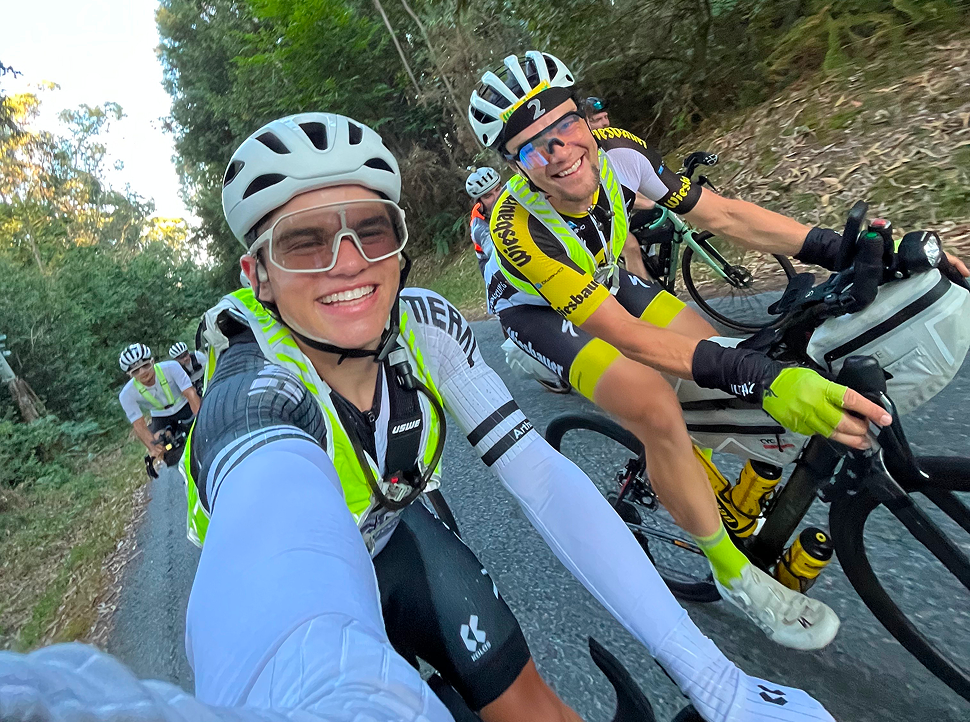Olympic champions are known to be the best of the best, masters of their craft. For the triathlon, that is Alex Yee. After claiming silver in the 2020 Tokyo games, he unleashed a gold-medal performance in Paris. Alex then took to the mixed relay, where he had the fastest leg of any athlete and led Great Britain to bronze.
Alex’s journey to the top was the result of meticulous planning, training, and competitive spirit. The 26-year-old British athlete came in fully prepared, and not even a one-day delay and a highly competitive field could stand in his way.
Training Product: COROS PACE 3 and COROS HR Monitor
Race Product:COROS DURA
Analysis Tool:COROS Training Hub
Data-Driven Insights: The Role of Technology
In recent years, data has become an integral part of sports, revolutionizing how athletes prepare, perform, and recover. With metrics such as heart rate, power output, and recovery times, coaches and athletes can tailor training programs to meet specific needs and goals.
Alex is no exception to this revolution, and has embraced the use of advanced data metrics. "For me, I believe COROS is the best. We are focused on performance and I wouldn't use a product unless I felt it was the best."
Courtesy of his COROS devices, Alex monitored everything from heart rate and pace to power output and recovery. This data allowed his team to make informed decisions about his training load, intensity, and rest periods. He optimized every aspect of his preparation to meet the demands of his race.
The Build-Up to the Olympics
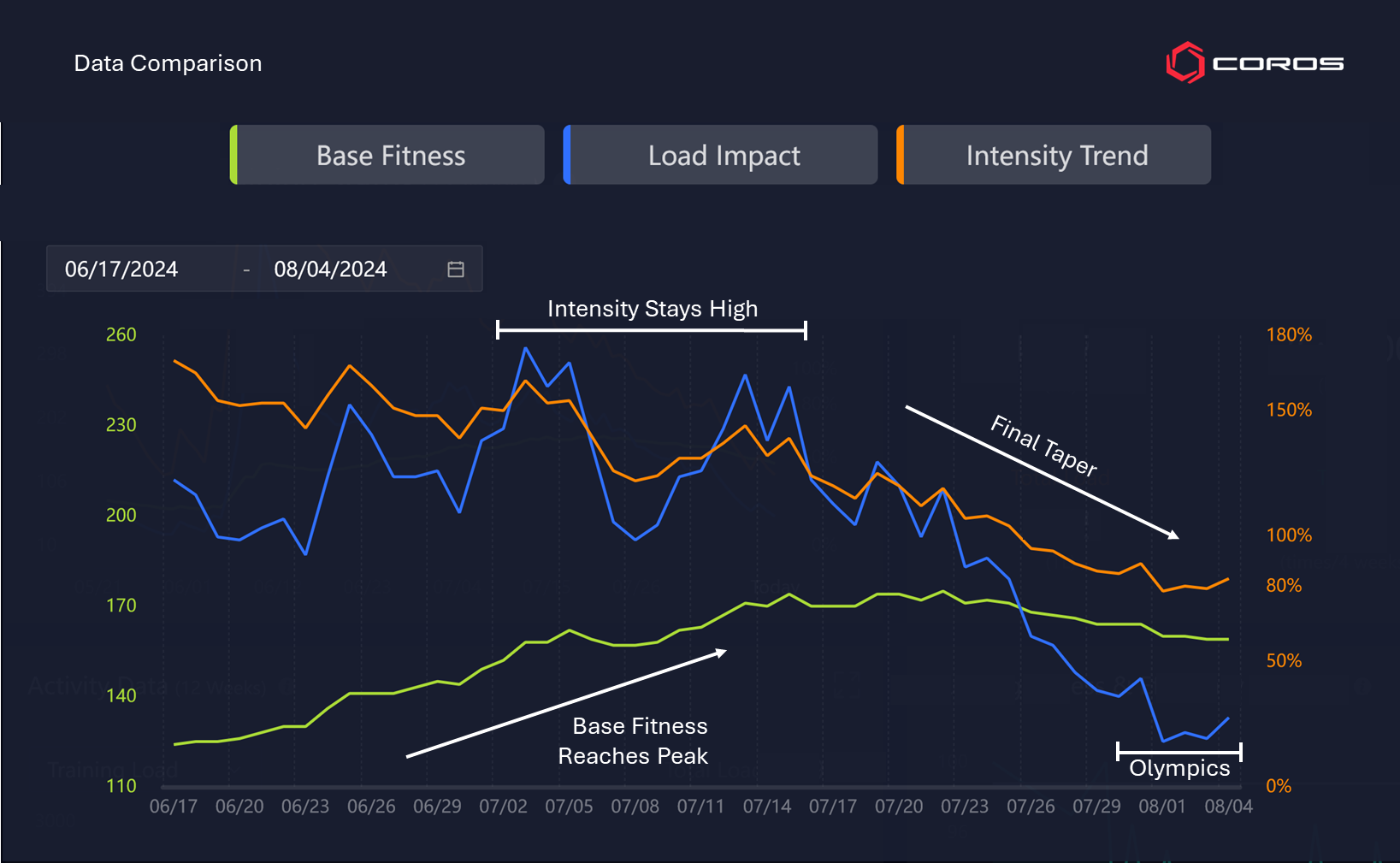
Alex’s final six weeks leading into the Olympic Games was a masterclass. He maintained intense workouts, building his base fitness as long as possible. Then, the ever-important taper, where he reduced volume, but kept intensity in the final days before the Games. By carefully managing his workload and recovery, Alex was able to peak at the right time, entering the Olympics in peak condition.
Key Running Workout
Each of Alex's workouts were carefully thought-out, targeting a specific demand that the event would throw at him. For example, this running workout specifically targeted the 180-degree turns featured in the Paris triathlon course, and ran at the intensity required to contend.
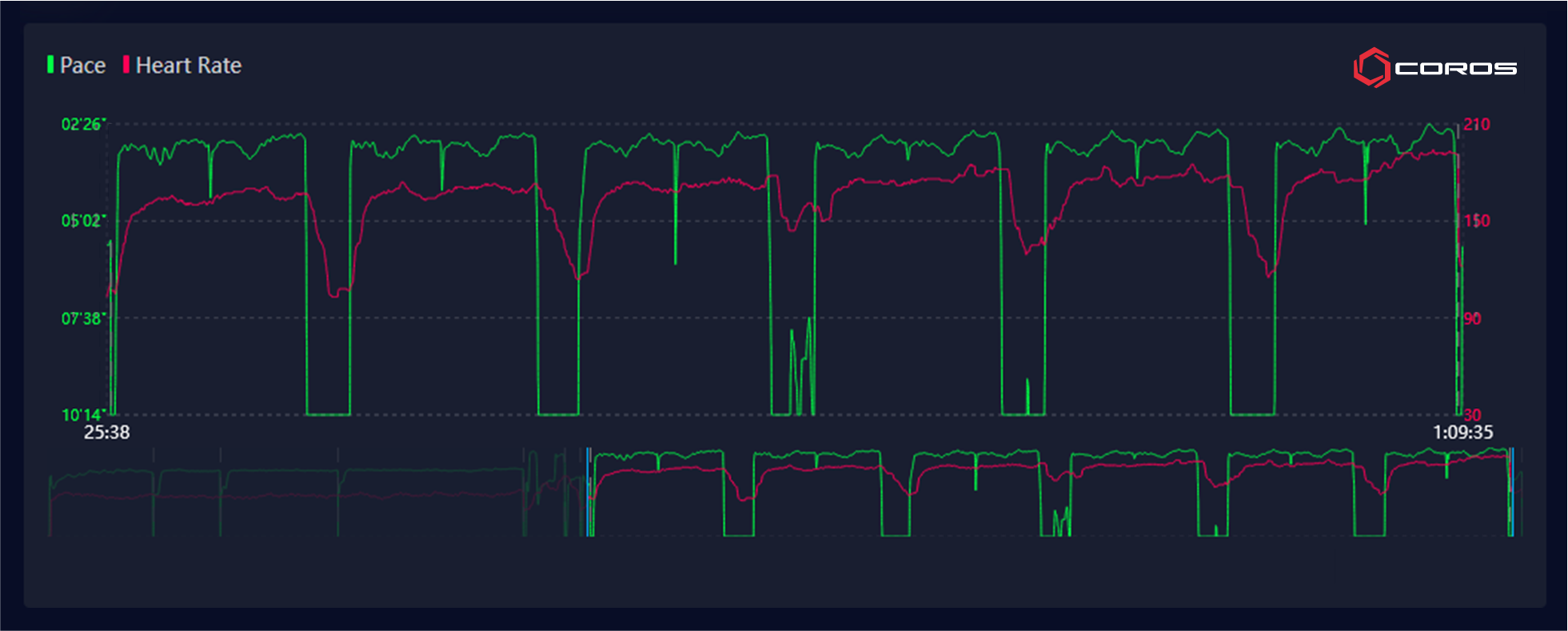
The workout is 6 x 2K at race effort with 90 seconds of rest. For Alex, his first rep was 6:00 averaging 3:00/km. The averages of his next 5 intervals were 2:54/km, 2:51/km, 2:50/km, 2:48/km and finished with a rep at 2:45/km. In the graph, you can see the momentary drop in pace at the halfway point of each 2K. That is where he made the 180-degree turn and focused on getting up to speed straight away. To help Alex through this training, he worked with training partners to accelerate out of the turns to simulate race day. His Olympic competition wouldn't go easy on him, so neither would his training partners.
"The key to this workout was working on my U-turns and getting back up to speed quickly, but also building through the workout. I wanted to finish stronger than I started knowing I may need that in Paris."
Key Cycling Workout
Alex specifically targeted his training in the other disciplines, too. In this cycling workout, he simulated the cycling section of the Paris race with a 3 minute focused chase, followed by high intensity group riding.
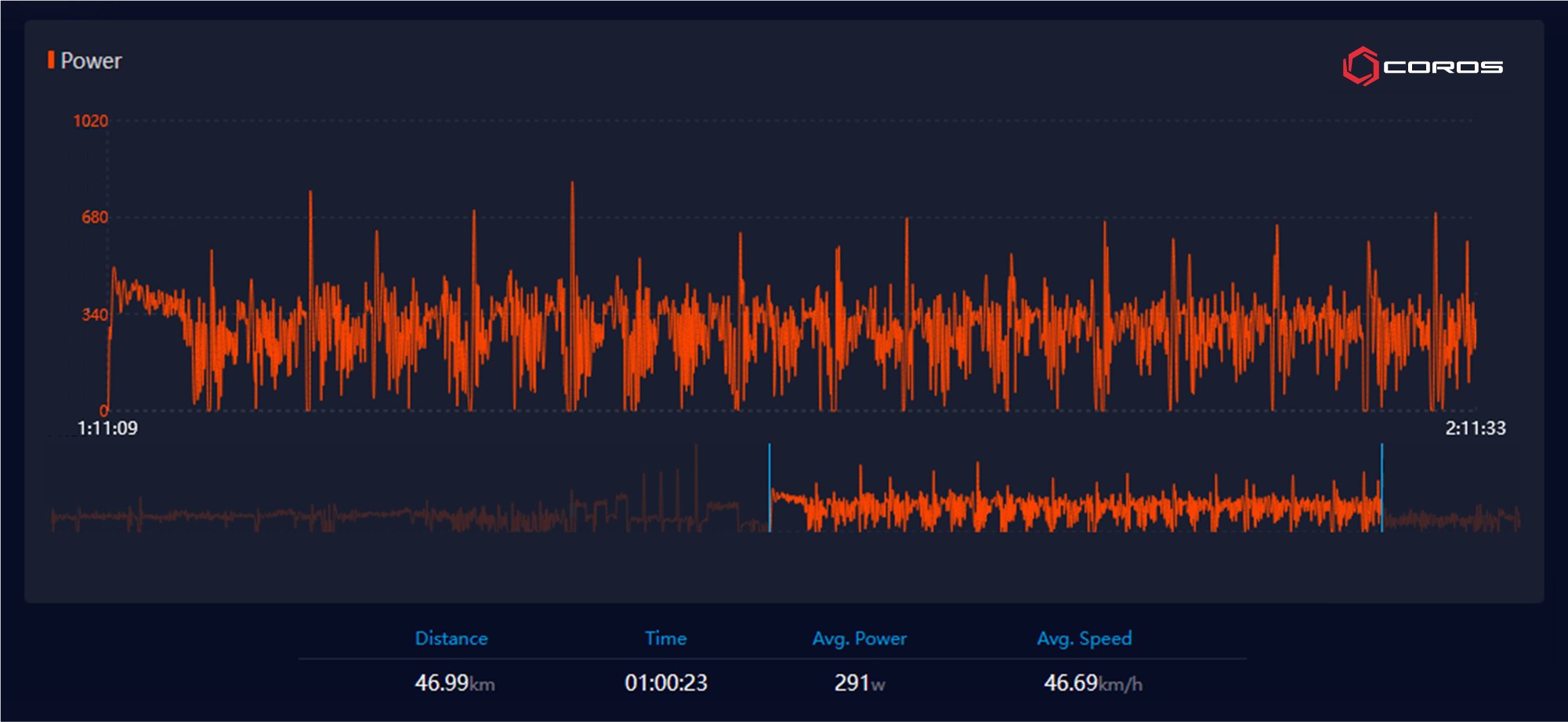
The focus of the workout was to push for 3 minutes to catch onto his riding group, and then work hard near the front to simulate catching the pack, and driving the pace onward. Throughout the effort, Alex averaged 291 watts but also mixed in surges above 600 watts to prepare accordingly given the intensity surely to come in Paris.
"For this ride, I started behind my riding group. I wanted to replicate coming out of the water behind the lead pack and having to catch on. Once I caught the group, we sprinted out of every corner on our loop knowing this is how the Paris race would unfold. For the total of the ride we averaged 46.69 km/h which is very close to what we averaged in Paris, which was 46.1km/h"
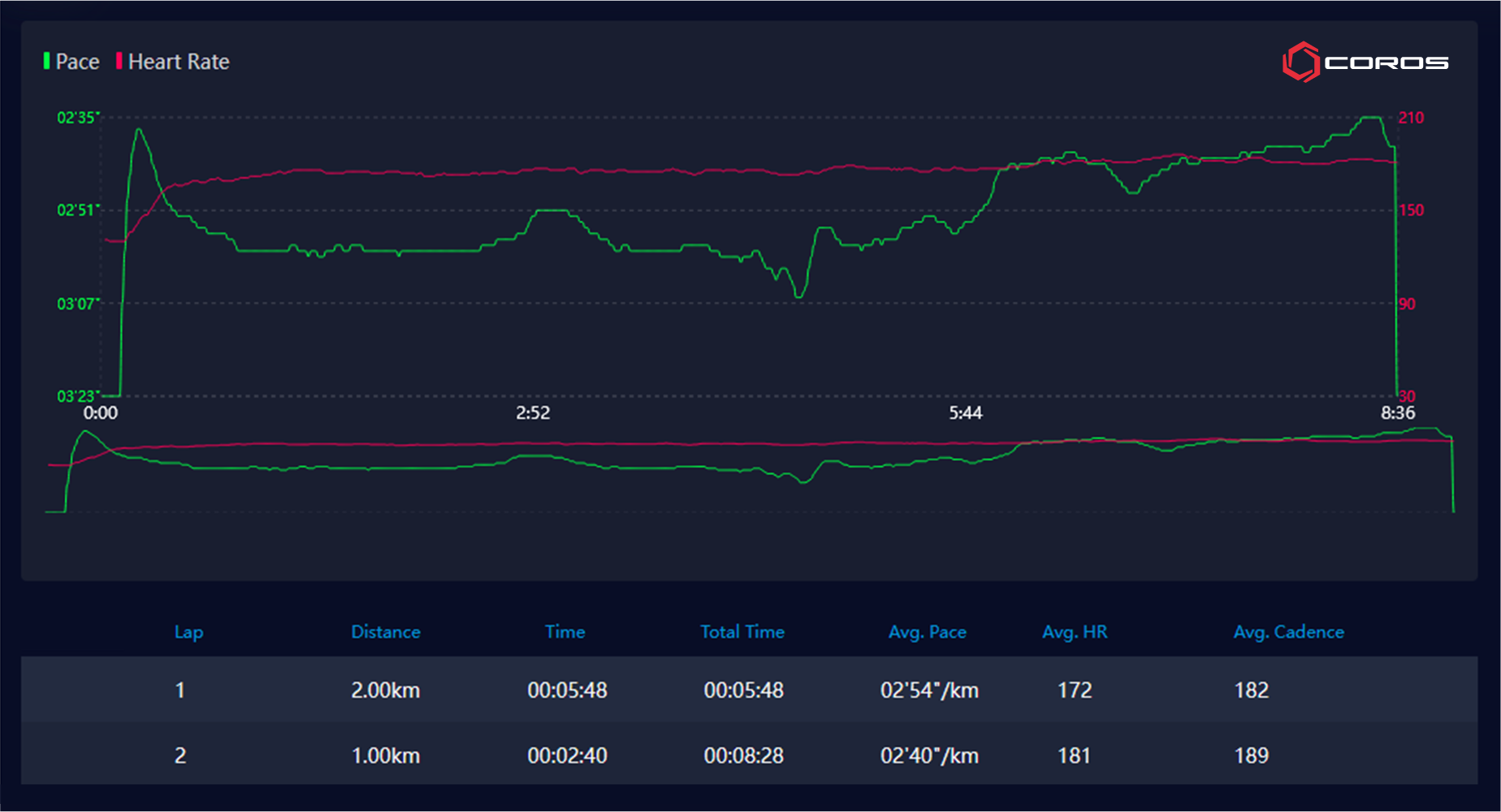
Once finishing his ride, he jumped straight into a 3km run session. Transitions in triathlon are critical, so this switch from cycling to running is a calculated part of Alex's training program. The first 2K was at threshold, followed by an increase in pace for the final kilometer. If the race came down to a kick, training like this would ensure he was ready.
"Going into this run, I wanted to run at my threshold for the first 2km off the bike and get into a good rhythm. Then for the final 1km I wanted to push and replicate what it would be like surging to the finish line. I would say this is the most specific I have ever prepped for a race."
The Olympic Race: Execution Under Pressure
Originally, race day was set for July 30th, but a delay due to water quality pushed the race back to the 31st. Unphased, Alex was primed and ready to start swimming at 10AM.
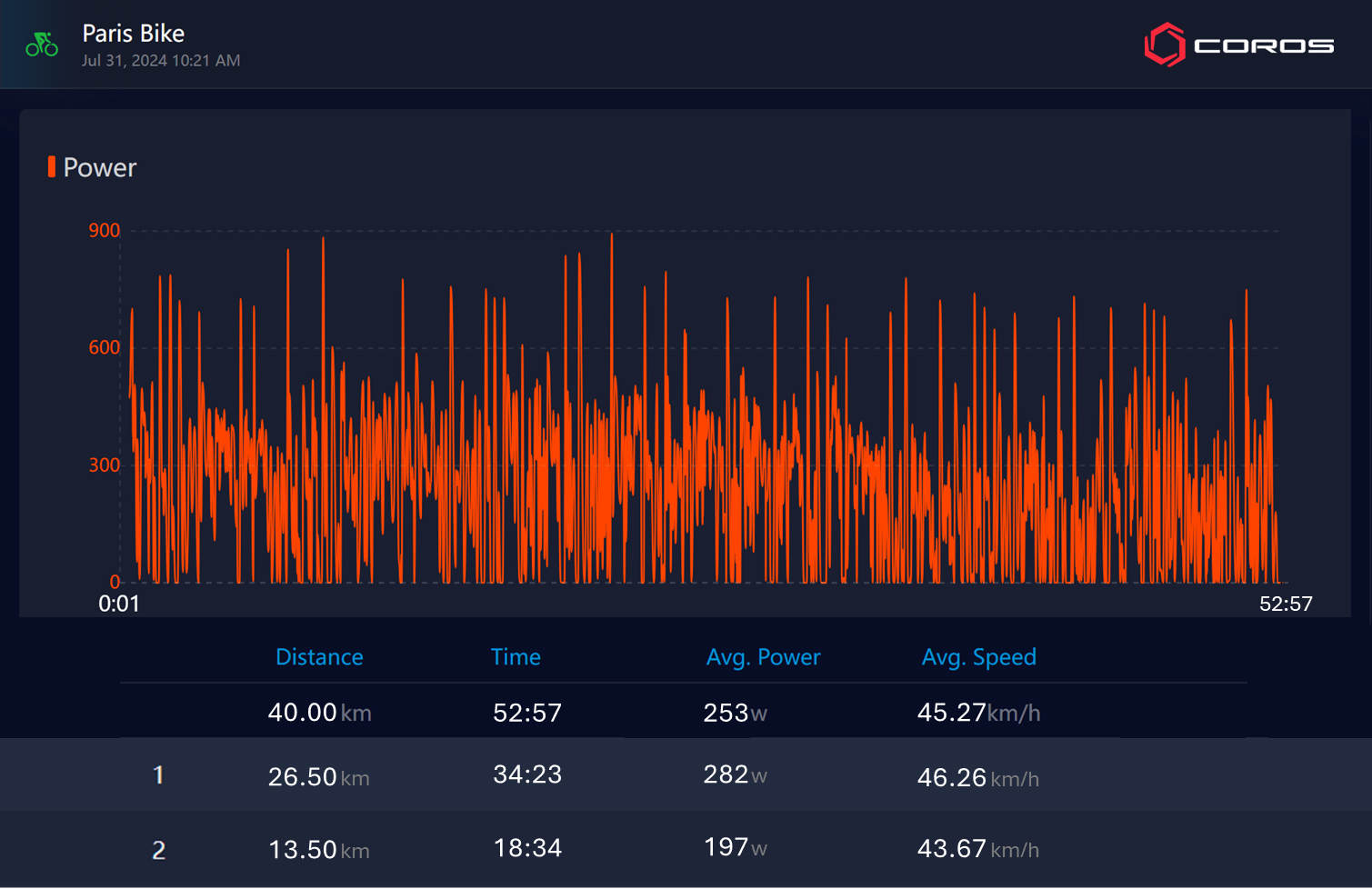
During his preperations in training, Alex had thought he may come out of the water in the chase pack. Realizing he came out with the leaders, he headed to the front to push the pace. "I wanted the high speed so it would be hard to be caught. It was very similar to what I trained for, so I felt comfortable putting in the effort." As can be seen above, Alex's power numbers and speed were nearly identical to his tune up session early in the summer. Averaging 282 watts and 46.26 km/h, this was exactly how Alex had trained.
Upon being caught from the pack behind, Alex decided to sit back in the group to conserve energy. "Once we were caught, we eased up on the pace. I wanted to conserve some of my energy for later." Even with easing up, Alex still hit over 600 watts on 41 different occasions throughout the ride. Again, his team had prepared for the exact demands he found in Paris. During the final 13.5km, Alex averaged 197 watts and 43.67 km/h. This final stretch allowed him to find more time in Zone 1 and recover, heading into the run.
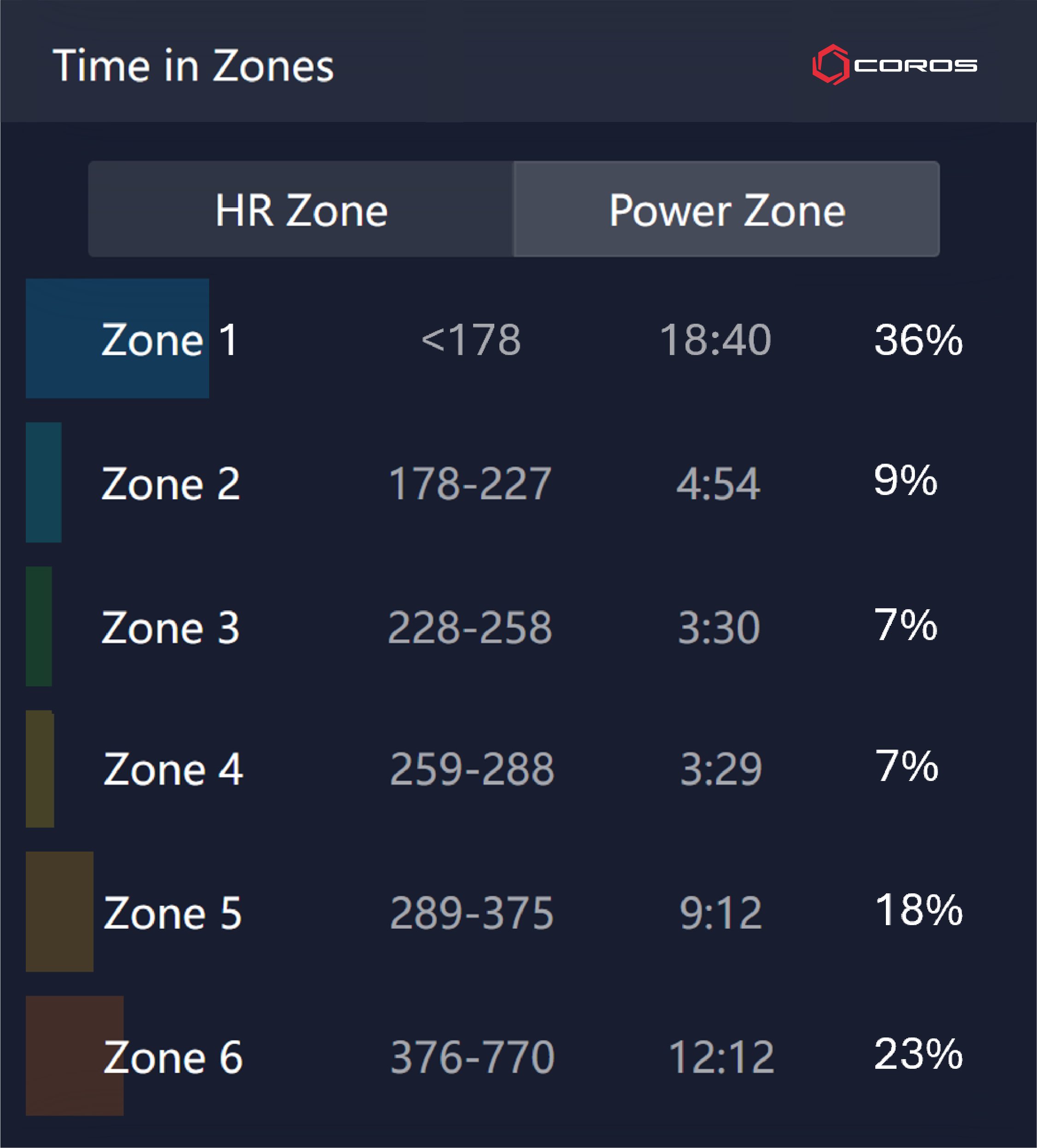
Coming off the bike in 16th place, Alex had work to do in the final leg of the race. This however, is his bread and butter - where he gains the most ground on his competition. "Off the bike, I wanted to put pressure on the race, but I probably didn't have as good of legs as I did in training. I decided to pace a bit more conservative once in the lead."
Holding a steady pace during lap 1 of the run, New Zealand's Hayden Wilde caught and overtook him for the lead. Sitting around 10 seconds back as the race neared its finish, Alex relied on his training once again. "I had kept things in control for the most part...I conserved just enough energy to provide one last major kick. I had done this in training, so I felt confident I could replicate it again." With 400 meters to go. Alex surged and passed Wilde before entering the blue carpet and securing his first Gold Medal.
| Men's Individual | |||||
| 1500m Swim | Swim to Bike Transition | 40km Bike | Bike to Run Transition | 10km Run | Total Time |
| 20:37 | 0:50 | 51:57 | 0:22 | 29:47 | 1:43:33 |
| 1:22/100m | 46.2 km/hr | 2:59/km | |||
| Mixed Relay | |||||
| 300m Swim | Swim to Bike Transition | 7km Bike | Bike to Run Transition | 1.8km Run | Relay Leg Time |
| 4:13 | 1:04 | 9:36 | 0:26 | 4:44 | 20:03 |
| 1:24/100m | 43.75 km/hr | 2:38/km | |||
A few days later, Alex ran in the Mixed Relay. He led off as the first athlete, completing the swim and bike at a similar pace to his individual victory.
He then showed off his running prowess again, taking the lead as he finished his leg at a blistering 2:38/km (4:14/mi) pace. His 3 teammates then carried Team GB to the bronze medal in a close finish.
Train Like the Best
Given the success Alex found in his specific training leading up to Paris, he shared a few key workouts that can be downloaded directly into your COROS training library. Each workout is designed based on training zones, so athletes of any ability can replicate a few of Alex's key workouts.
• A key workout for Alex as he leads with fartlek intervals to stress his body, and then settles into threshold for 30 minutes to simulate racing conditions
• Similar to the running workout, this session includes 23 minutes of intervals with various durations in zones 4, 5, and 6. Then, it settles into an extended threshold effort in zone 4.
• This workout starts off with 10x50m, cutting down from 1500m pace to max effort. After a short rest, it goes into a series of steady 100s.
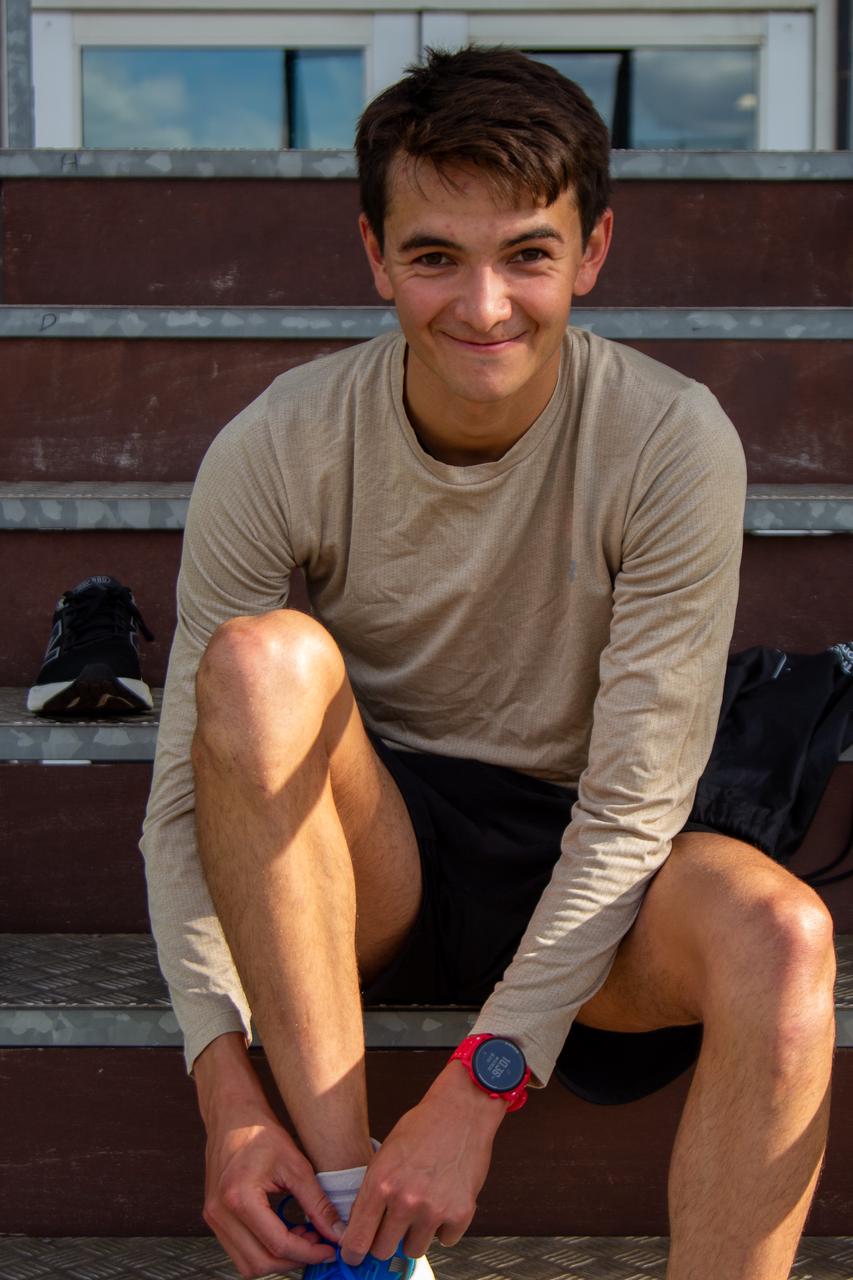
As Alex continues to push the boundaries of what’s possible, his Olympic win serves as a powerful reminder of how the combination of hard work, strategic planning, and data-driven insights can lead to extraordinary success.
If you're looking to get the most out of your training and race day performance, head to www.coros.com for more information.

/filters:quality(90)/fit-in/970x750/coros-web-faq/upload/images/4d08d77df26e1cd5a623b7e5a8fd7809.png)
